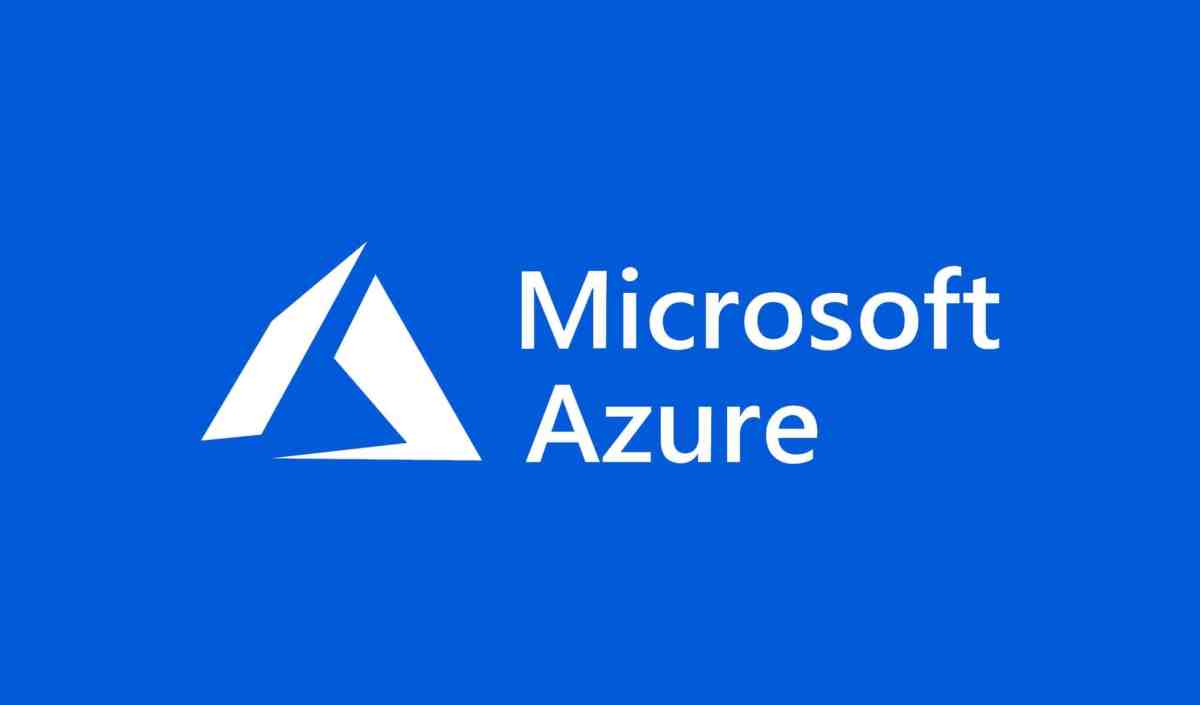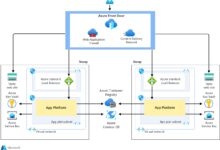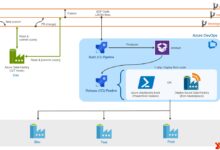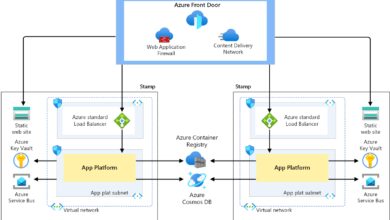And azure: 7 Powerful Ways AWS and Azure Transform Cloud Computing
In today’s fast-evolving digital landscape, cloud computing has become the backbone of innovation. Among the leaders, AWS and Azure stand tall—each offering robust platforms that empower businesses to scale, innovate, and secure their digital futures. But how do they compare, integrate, and dominate the market? Let’s dive in.
Understanding AWS and Azure: The Cloud Titans

Amazon Web Services (AWS) and Microsoft Azure are the two most dominant players in the global cloud infrastructure market. Together, they control over 60% of the cloud services industry, according to recent reports from Gartner. While both offer scalable, on-demand computing resources, their origins, architectures, and strategic focuses differ significantly.
Origins and Market Evolution
AWS launched in 2006, pioneering the modern cloud era by offering remote computing power, storage, and databases. It was born out of Amazon’s need to scale its own e-commerce infrastructure. Azure, introduced by Microsoft in 2010, entered the scene with a hybrid-first approach, targeting enterprises already invested in Microsoft products like Windows Server, Active Directory, and Office 365.
- AWS was first to market, giving it a significant head start in features and global reach.
- Azure leveraged Microsoft’s massive enterprise customer base to gain rapid adoption.
- Both platforms now offer over 200 services, from AI to IoT to serverless computing.
Global Infrastructure and Availability
One of the key differentiators between AWS and Azure is their global footprint. AWS operates in 33 geographic regions with 102 Availability Zones, while Azure spans 61 regions across 140 countries. This extensive reach ensures low-latency access and compliance with local data sovereignty laws.
“The cloud is not just about technology—it’s about transformation. AWS and Azure are not competitors; they are catalysts for digital evolution.” — Satya Nadella, CEO of Microsoft
Key Differences Between AWS and Azure
While AWS and Azure share many capabilities, their design philosophies, pricing models, and integration ecosystems set them apart. Understanding these differences is crucial for businesses deciding which platform—or combination—to adopt.
Service Offerings and Innovation Pace
AWS is known for its breadth of services, often launching new tools and features ahead of competitors. For example, AWS Lambda revolutionized serverless computing in 2014. Azure, while slightly slower in innovation, excels in seamless integration with existing Microsoft software, making it ideal for organizations using .NET, SQL Server, or Dynamics 365.
- AWS leads in open-source support and containerization (e.g., EKS, ECS).
- Azure dominates in hybrid cloud scenarios with Azure Stack and Arc.
- Both support Kubernetes, but AWS’s EKS is more mature, while Azure’s AKS offers tighter DevOps integration.
Pricing and Cost Management
Pricing is a major consideration when evaluating AWS and Azure. AWS uses a pay-as-you-go model with granular billing (per second for some services), while Azure offers hybrid benefits and reserved instances that can reduce costs by up to 80% for long-term commitments.
Tools like AWS Cost Explorer and Azure Cost Management help organizations track spending, optimize resources, and avoid budget overruns. However, AWS’s pricing complexity can lead to unexpected charges if not monitored closely.
Integration Possibilities: When AWS Meets Azure
Contrary to popular belief, AWS and Azure are not mutually exclusive. Many enterprises adopt a multi-cloud strategy, leveraging the strengths of both platforms. This approach enhances resilience, avoids vendor lock-in, and allows best-of-breed solutions.
Hybrid and Multi-Cloud Architectures
Organizations increasingly deploy workloads across both AWS and Azure. For instance, a company might run its AI models on Azure Machine Learning while hosting its customer-facing web apps on AWS EC2. Tools like Terraform, Kubernetes, and Istio enable consistent deployment and management across clouds.
- Multi-cloud reduces downtime risk—if one provider experiences an outage, others can take over.
- Hybrid setups allow legacy systems on-premises to connect securely to cloud resources via AWS Direct Connect or Azure ExpressRoute.
- Cross-cloud data replication ensures disaster recovery and compliance with GDPR or HIPAA.
Networking and Security Across Clouds
Secure communication between AWS and Azure is possible using Virtual Private Networks (VPNs), ExpressRoute/Direct Connect partnerships, or third-party SD-WAN solutions. Identity management can be unified using Azure Active Directory (Azure AD) integrated with AWS IAM via SAML 2.0.
“The future of cloud isn’t one platform—it’s interoperability. AWS and Azure must work together to deliver true enterprise agility.” — Werner Vogels, CTO of Amazon
Use Cases: Real-World Applications of AWS and Azure
From startups to Fortune 500 companies, organizations leverage AWS and Azure in innovative ways. Below are some compelling use cases that highlight their combined power.
Data Analytics and AI/ML Workloads
Many firms use AWS for data lakes (via S3 and Glue) and Azure for advanced analytics (Power BI, Synapse Analytics). Machine learning models trained on Azure ML can be deployed alongside AWS SageMaker for A/B testing and performance comparison.
- Healthcare providers analyze patient data using AWS Redshift and visualize insights in Azure Power BI.
- Financial institutions run fraud detection models across both platforms for redundancy and accuracy.
- Manufacturers use IoT data from Azure IoT Hub processed in AWS Kinesis for real-time monitoring.
Disaster Recovery and Business Continuity
Running critical systems on a single cloud poses risks. Companies mitigate this by replicating databases and virtual machines between AWS and Azure. For example, SQL Server backups from Azure VMs can be restored on AWS RDS, ensuring continuity during outages.
Solutions like Veeam, Zerto, and Azure Site Recovery support cross-cloud replication, making failover seamless and predictable.
Security and Compliance in AWS and Azure
Security is paramount in cloud computing. Both AWS and Azure offer enterprise-grade security features, but their approaches vary based on architecture and compliance frameworks.
Identity and Access Management
AWS uses Identity and Access Management (IAM) to control user permissions, while Azure relies on Azure Active Directory (Azure AD). Integrating both allows centralized identity governance. For example, employees can log in using Azure AD credentials to access AWS resources through federation.
- Azure AD supports Conditional Access policies based on device compliance and location.
- AWS IAM allows fine-grained permissions using JSON policies.
- Multi-factor authentication (MFA) is enforced on both platforms to prevent unauthorized access.
Compliance and Certifications
Both AWS and Azure comply with major regulatory standards including ISO 27001, SOC 1/2/3, HIPAA, GDPR, and FedRAMP. However, Azure has an edge in government contracts due to its Department of Defense (DoD) certifications and dedicated government clouds.
For global enterprises, this means they can confidently store sensitive data in either platform, knowing that audit trails, encryption, and data residency requirements are met.
Performance and Scalability: AWS vs Azure
Performance is a critical factor when choosing between AWS and Azure. Both platforms offer high availability, auto-scaling, and global content delivery, but real-world benchmarks show subtle differences.
Compute and Memory Performance
Benchmarks from第三方 sources like CloudHarmony and TechReport indicate that AWS EC2 instances generally offer better raw compute performance, especially in CPU-intensive tasks. Azure’s VMs, particularly the Dv4 and Ev4 series, are optimized for memory-heavy applications and perform well in enterprise workloads.
- AWS Graviton2 processors provide up to 40% better price-performance for ARM-based workloads.
- Azure HBv3 instances are designed for high-performance computing (HPC) and AI training.
- Auto Scaling groups in AWS and Scale Sets in Azure allow dynamic resource adjustment based on demand.
Storage and Latency
AWS S3 offers 99.999999999% (11 nines) durability for object storage, while Azure Blob Storage provides similar reliability. However, AWS tends to have lower latency in read/write operations, especially in regions with high traffic.
For block storage, AWS EBS and Azure Managed Disks both support SSD and HDD options, but AWS allows more granular IOPS tuning, which benefits database performance.
Cost Optimization Strategies for AWS and Azure
Cloud costs can spiral without proper governance. Organizations using both AWS and Azure must implement cost control measures to maximize ROI.
Reserved Instances and Savings Plans
AWS offers Savings Plans and Reserved Instances (RIs), which can reduce compute costs by up to 72%. Azure provides Reserved VM Instances with similar discounts. These are ideal for predictable, long-running workloads like databases or domain controllers.
- Savings Plans in AWS apply across services (e.g., EC2, Fargate), offering flexibility.
- Azure’s Hybrid Benefit allows customers to use existing Windows Server licenses for VMs, reducing costs by up to 55%.
- Both platforms offer spot instances (AWS) and low-priority VMs (Azure) for fault-tolerant workloads at up to 90% discount.
Monitoring and Governance Tools
Effective cost management requires visibility. AWS CloudWatch, AWS Budgets, and Azure Monitor, Azure Cost Management provide dashboards, alerts, and recommendations.
Third-party tools like Datadog, CloudHealth by VMware, and Azure Advisor help identify idle resources, overprovisioned instances, and underutilized databases—common sources of waste.
Future Trends: The Convergence of AWS and Azure
The cloud landscape is evolving toward interoperability, sustainability, and AI-driven automation. AWS and Azure are no longer just competitors—they are shaping a new era of collaborative cloud ecosystems.
AI and Machine Learning Integration
Both AWS and Azure are investing heavily in AI. AWS SageMaker and Azure Machine Learning now support cross-platform model deployment. For example, a model trained in SageMaker can be served via Azure Kubernetes Service (AKS) for edge computing scenarios.
- Joint AI initiatives are emerging, especially in healthcare and climate modeling.
- Open standards like ONNX allow models to be shared between AWS and Azure environments.
- AI-powered cost optimization tools are being developed to auto-scale and shut down unused resources.
Sustainability and Green Cloud Computing
Environmental impact is a growing concern. AWS aims to run on 100% renewable energy by 2025, while Azure already powers 60% of its data centers with green energy. Companies using both platforms can optimize workloads to run in regions with lower carbon footprints.
“Sustainability is not optional—it’s a competitive advantage. AWS and Azure are leading the charge in green cloud innovation.” — Andy Jassy, CEO of Amazon Web Services
Choosing Between AWS and Azure: A Strategic Decision
Selecting the right cloud provider—or combination—depends on business goals, technical requirements, and existing IT investments. There is no one-size-fits-all answer.
Factors to Consider
Organizations should evaluate:
- Existing Infrastructure: If your company uses Microsoft products heavily, Azure may offer smoother integration.
- Workload Type: High-performance computing favors AWS; hybrid scenarios favor Azure.
- Budget: Azure’s licensing benefits can save money for Windows-based environments.
- Geographic Needs: Choose the provider with better regional presence where your users are.
- Security Requirements: Both are secure, but Azure has deeper integration with Microsoft’s security stack.
When to Use Both?
A multi-cloud strategy makes sense when:
- You need redundancy and high availability across providers.
- Different departments have different cloud preferences (e.g., marketing on AWS, finance on Azure).
- You’re migrating from one platform to another and need a phased approach.
- Regulatory requirements mandate data replication across independent cloud providers.
What are the main differences between AWS and Azure?
AWS is known for its extensive service catalog and global reach, while Azure excels in hybrid integration and enterprise compatibility with Microsoft products. AWS leads in open-source and container technologies, whereas Azure offers better Windows and .NET support.
Can I use AWS and Azure together?
Yes, many organizations use both AWS and Azure in a multi-cloud strategy. This allows them to avoid vendor lock-in, improve disaster recovery, and leverage the best services from each platform. Tools like Terraform, Kubernetes, and Azure AD federation make integration possible.
Which is cheaper: AWS or Azure?
Cost depends on usage patterns. Azure can be more cost-effective for Windows-based workloads due to licensing benefits, while AWS often offers better pricing for Linux and open-source services. Spot instances and reserved plans on both platforms can significantly reduce costs.
Is AWS safer than Azure?
Both AWS and Azure offer robust security features and comply with major regulatory standards. Neither is inherently safer; security depends on how the platform is configured and managed. Best practices like MFA, encryption, and least-privilege access apply to both.
Which cloud platform is best for beginners?
Azure may be easier for those already familiar with Microsoft tools, while AWS offers more free-tier services and learning resources through AWS Educate and AWS Academy. Ultimately, hands-on experience with either platform builds valuable skills.
The rivalry between AWS and Azure has fueled unprecedented innovation in cloud computing. Rather than viewing them as competitors, forward-thinking organizations are leveraging both to build resilient, scalable, and intelligent systems. Whether you choose AWS, Azure, or a blend of both, the key is to align your cloud strategy with business objectives, security needs, and long-term growth. The future belongs not to a single cloud, but to those who master the synergy between AWS and Azure.
Further Reading:









